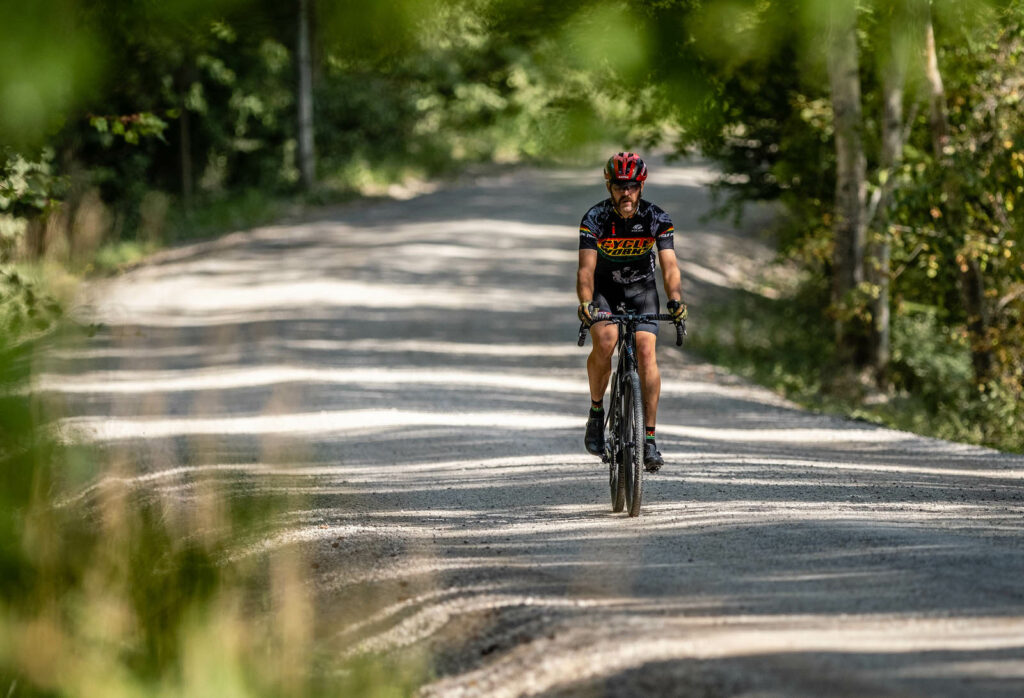
GT Grade Carbon Pro: Getting Rolling – by MG
Back in May, GT announced an all-new 2020 Grade family of gravel bikes (read our coverage of it here). Ever since, we’ve been itching to get our hands on one for testing. And while GT actually shipped our test bike out in mid-summer, there was a delay in us actually getting our hands on it.
You see, while our test bike uses a stock production 2020 GT Grade Carbon Pro frame and fork, the build kit is unique to our bike. We sent the frameset off to Shimano to be built with the all-new GRX Di2 groupset and PRO Discovery components for the Shimano GRX Di2 press intro (read coverage here). As a result, this review will focus primarily on the performance of the frameset, with components covered in separate reviews.
About the All-New 2020 GT Grade
Available in a wide range of both alloy and carbon frame models, the new Grade is designed to be versatile enough for any gravel adventure. Plus, with models starting at just $1,000, there’s a Grade for riders of nearly every budget.

Each Grade model features a wide range of mounts on the frame and fork, including three-pack mounts atop the down tube and on the fork legs. Standard water bottle mounts are located on the seat tube and underside of the down tube, while the top tube has threaded bento bag mounts. Alloy Grade models also feature two additional water bottle mounts atop the seatstays.
All Grade models have rack and fender mounts, as well as routing for an internally-routed dropper post, giving riders plenty of options. In the interest of easy service, GT routes all cables and hoses externally, underneath the down tube. I love this, as it makes maintenance and parts swapping much easier than with internal cable/hose routing. On carbon frames, internal Di2 routing is also provided, so the new Grade effectively supports any 1x or 2x drivetrain currently available.
GT offers alloy Grade models in six sizes, from 44cm to 61cm. Grade Carbon models are available in five sizes, starting at 48cm.
Innovative Frame, Geometry Options
The new Grade framesets are equipped with unique innovations that differentiate them from other seemingly similar gravel bikes. Most immediately noticeable is GT’s latest rendition of its iconic Triple Triangle frame design.

Instead of connecting to the seat tube, as previous generations did, the seatstays now float past the seat tube without touching it, now connecting solely at the top tube and dropouts. The design encourages the svelte seatstays to subtly bow along their length to absorb bumps and vibration before they reach the rider.
Carbon Grade models feature seatstays with what GT calls Dual Fiber Dynamics. Built of a composite of carbon fiber and fiberglass, GT says the solid fiberglass core increases toughness and provides vibration damping, while the outer carbon layers control stiffness.
The top two Grade Carbon models also feature a carbon fork with adjustable offset. With the flip of a chip located at the fork dropout, riders can select either 55mm or 70mm of offset. GT says the 55mm setting is ideal for most typical gravel riding, while the 70mm setting is better for bikepacking with weight on the front wheel.
The availability of a “low-trail” 70mm offset setting on upper-end Grade Carbon models is relatively unique in the modern cycling world. We’ll dive into this more in our Checkpoint post, once we’ve logged more time on the bike in both settings, but we’re quickly becoming fans of the bike’s handling in the low-trail setting. Regardless of whether there’s a load present or not, the light, intuitive handling is a refreshing change from the norm.
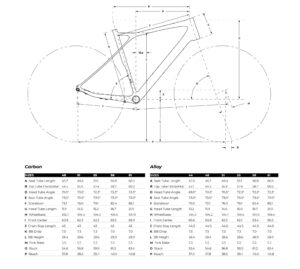
Aside from the adjustable fork offset, the rest of the Grade’s geometry is fairly standard fare. The 72.3-degree head tube and 73-degree seat tube angles (on our 58cm tester) are pretty middle of the road, as is the 70mm of bottom bracket drop. GT says the frame and fork are capable of clearing up to 42c tires, and from our experience, that’s pretty accurate. I’d bet the fork will take a 45c tire without clearance issues, so I’ll try it out and will report back in future installments.
Initial Impressions
My first rides on the 2020 Grade Carbon Pro came in Whitefish, Montana, during the Shimano GRX Di2 press event. Right from the start, the bike impressed me with its super smooth ride and excellent manners in the fast, rocky terrain. We rode singletrack, deserted forest roads and even a bit of pavement in our time in Montana, and the Grade Carbon Pro was clearly in its element.

Back at home in Nebraska, the Grade is equally at home. With the fork set in the rearward (55mm offset) position, handling is stable and easy to manage. It felt like money to me… until I flipped the chip in the fork to the longer 70mm offset position. What a difference. I have been waiting a long time for a modern low-trail gravel frame, and in the GT Grade Carbon Pro, I believe that day has come. The thought that comes to mind every time I ride it is, “this is how a bike is supposed to handle”.
Time will tell if this feeling subsides, but for now, the handling, ride quality and overall feel of the Grade Carbon Pro are testament to the amount of work GT put into the new bikes. I can’t wait to put more miles in on our test bike, so look for an update on our test results to come soon.
In the meantime, head on over to GTBicycles.com to learn more about the all new 2020 GT Grade.
Note: GT sent the Grade Carbon Pro frameset to Riding Gravel at no charge for test and review. We were not paid, nor bribed for this review and we always strive to give our honest thoughts and opinions throughout.



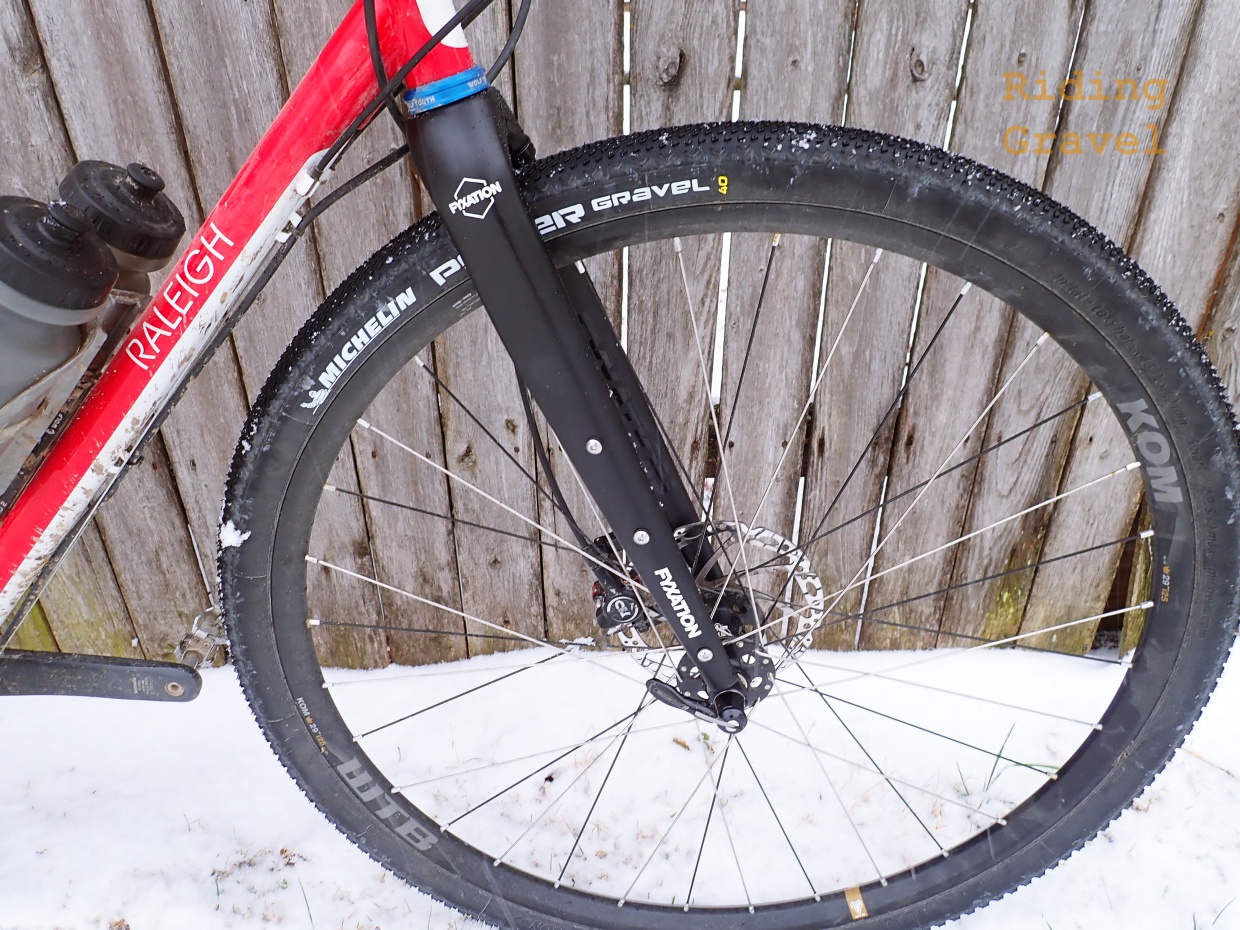
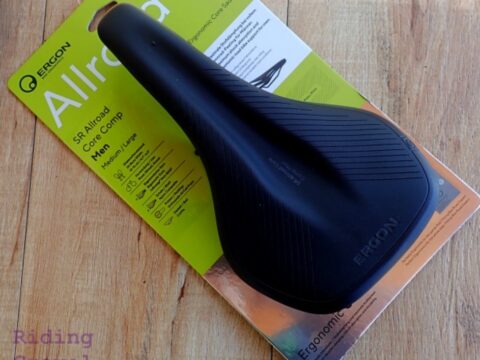
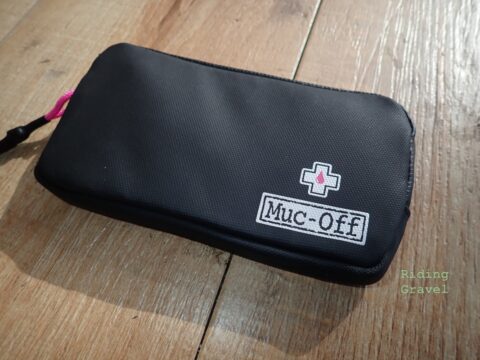

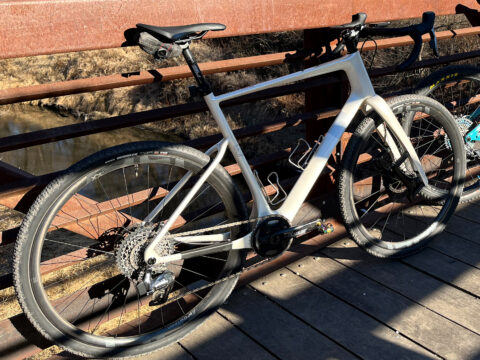
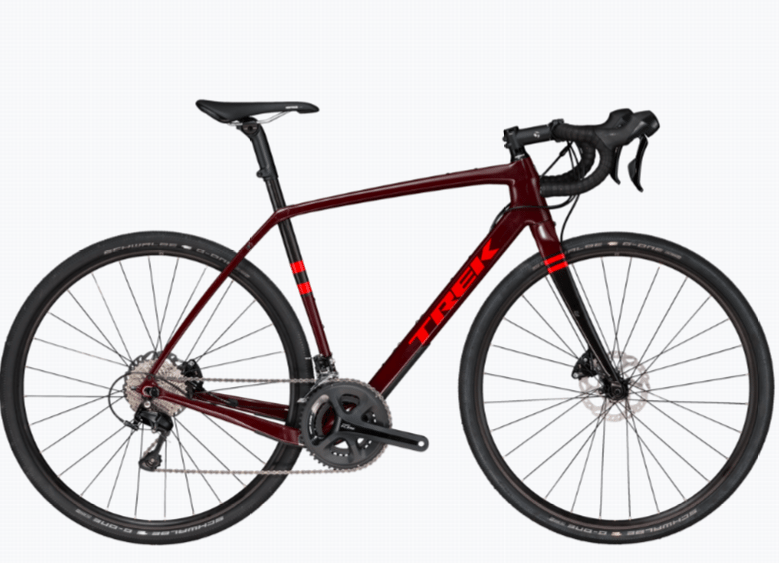
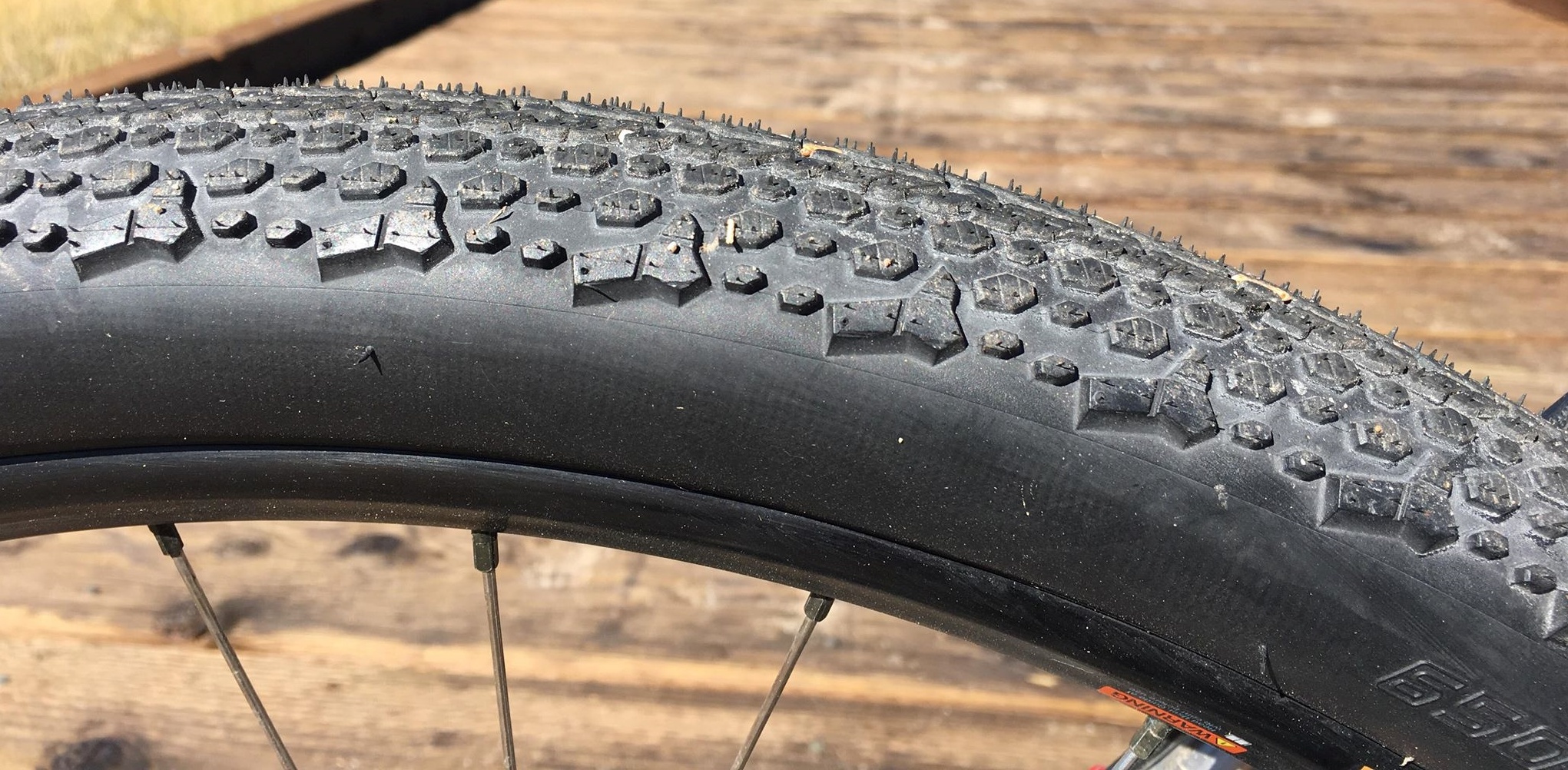
I’m looking forward to your thoughts on this bike. I can see this bike being good for gravel but also as a rando bike.
Thanks @Daniel – I agree with your line of thinking here. I’ll keep you posted.
Thanks for reading!!
I own this bike and absolutely love the ride quality. It’s simply put, fun and comfortable. In comparison with my Emonda road bike it’s definitely a bit slower for me on flats and climbs (which I’m curious if that would be the case If I’d swap out my road wheels). However, on the descents it is tons of fun. I felt safer at higher speeds than I typically would. I actually rode my first ever century on this after only riding it 10 miles the day before. I had no choice as my road bike is in the shop and nice weather days are limited now. I can’t express how comfortable a ride it was.
One big concern I have that I need help with is the Di2 set up. I had the chain come off up front 2x and it will not hold in the easiest/hardest 2 gears on the back ring. In E-tube, there is no 46/30 option for the crank so I think that’s the issue. No one seems to have an answer so if anyone here can assist it would be greatly appreciated. I have a Di2 with 50/34 crank on my Emonda and it’s flawless.
If I can get the shifting on the GT Grade sorted out it may become my always go-to. It’s that comfortable and fun to take out and never have to worry about the changing road conditions.
Also looking forward to your thoughts on this bike. Thanks
Thanks @mafranklin. I apologize it’s taken me so long to get my updated post onto the site. It’ll be coming soon. In the meantime, check out my Best of 2019 post: https://ridinggravel.com/editorial/gritty-take-mgs-best-of-2019/. You’ll see I named the Grade Carbon Pro one of my best of the year, and while the bike isn’t perfect (it’d need to fit 50c tires), it’s my favorite gravel bike to reach for at present… and I’ve got a lot of gravel bikes.
Thanks for reading! Look for that updated post to come soon.
Nice article Matt. Was wondering if anyone has tried 44c 700 tires on a carbon Grade.
Hey @Mark Huth – While GT officially rates the Grade Carbon to fit 42c tires, their rating seems a bit conservative. I’m currently running a Compass/Rene Herse Switchback Pass 44c tire on the rear with plenty of room, paired with a WTB Resolute 42c in the front. The Resolute measures out at 45c on my GRX front wheel, and there’s plenty of clearance in the fork with the combination.
From my experience, if you have a 44c tire that actually measures 44mm in width, you should be just fine.
Sorry for the delay in the update to my review… It’s been a crazy time, but I promise it’s coming soon!
I am running Raddler 44’s on mine with no issues at all, plenty of New England mud this spring and clearance has not ben an issue
great review. Could I ask how tall your are and how the 58cm works for you? I am 185cm but generally ride a 56 so am thinking the 55cm Grade seems a better fit than the 58cm (seems quite a gap). Thanks!